COVID-19 Update: Wednesday, February 17
The following is the latest COVID-19 information from the state government as of 4:30 p.m. on Wednesday, February 17.
 Department of Health
Department of Health
- The Department of Health announced that some vaccine providers have inadvertently been administering second-dose Moderna vaccines as first doses. As a result, the requests the state has received for second-dose Moderna vaccines this week significantly exceeded the state’s allocation; 200,000 such Moderna second doses were requested. To address this issue and ensure that patients receive a second dose within the time frame recommended by CDC guidelines (minimum of 21 to 28 days and maximum of 42 days), the Department of Health is adjusting the timing of the second dose. In addition, it will decrease first-dose allocations to meet the increased second-dose demand. According to Acting Secretary Alison Beam, the administration of approximately 100,000 doses may be delayed. This only applies to the Moderna vaccine and does not apply to Philadelphia County. The situation and the state’s response to it are described in greater detail in this news release.
- To help providers adjust to this problem, The Department of Health has updated formal guidance on the timing interval between COVID-19 vaccines, including instructions for vaccine providers to document instances when two doses of different vaccines are administered for any reason.
- The Department of Health has issued an order that seeks to increase the rate of COVID-19 vaccinations in the state. Among other things, the order requires vaccine providers to administer 80 percent of the vaccine first doses they receive within seven days of receipt and to report regularly on their progress in administering those vaccines; to report to the state on their receipt of additional vaccines; and to establish online and telephone systems through which Pennsylvanians can make appointments to receive vaccines. Learn more from the Department of Health’s news release on the action, its order on vaccine administration, and its FAQ on the order.
- Pharmacy partners are hosting three on-site clinics at all long-term-care facilities enrolled in the federal Pharmacy Partnership for Long-Term Care Program. The Department of Health has posted an FAQ to help facility administrators and providers prepare for residents and staff who may get their first COVID-19 vaccine dose at the third and final clinic.
- The Department of Health has issued quarantine recommendations for individuals exposed to COVID-19 after receiving a vaccination.
- The Department of Health has terminated its March 26, 2020 order requiring ambulatory surgical facilities to make daily reports of specific data on supplies and equipment.
- The Department of Health is temporarily suspending the requirement for new employees of long-term-care facilities to have a two-step tuberculosis skin test prior to beginning employment so that the skin test will not interfere with planning for the employee’s COVID-19 vaccination or delay employment. See the additional information posted on the Department of Health message board.
Department of Health – by the numbers
- The number of new daily cases has continued to decline in recent days but today the state passed the 900,000 mark for total COVID-19 cases.
- The daily death toll remains high but shows clear signs of declining. More than 23,000 Pennsylvanians have now died from the virus.
- More than 24,000 health care workers in Pennsylvania have contracted COVID-19, as have more than 78,000 residents and employees of long-term-care facilities across the state.
- For the week from February 5 through February 11 the state’s overall COVID-19 test positivity rate fell to 8.0 percent; it was 8.6 percent the week before that. This marked the eighth consecutive week the rate fell.
- 51 counties are currently in “substantial levels of community transmissions,” the lowest number this winter and down from 59 a week ago. Three counties are now in low levels of community transmission, up from just one a week ago, and 15 are in moderate levels of community transmission, up from seven a week ago. Allegheny and Philadelphia counties, the two largest in the state, continue to experience high levels of community transmission.
- The number of Pennsylvanians hospitalized with COVID-19 is just 40 percent of what it was at the beginning of the year; the number in hospital ICUs is 40 percent of what it was at the beginning of the year; and the number on ventilators is 39 percent.Currently, 21 percent of adult ICU beds in the state are unoccupied, as are 17 percent of medical/surgical beds, nine percent of pediatric ICU beds, 26 percent of pediatric beds, and 35 percent of airborne isolation units.
 As of February 17 the state’s vaccine dashboard shows that 877,000 Pennsylvanians have received their first dose of a COVID-19 vaccine and 436,000 have received both doses of vaccine. These numbers do not include Philadelphia, which operates its own COVID-19 vaccination program.
As of February 17 the state’s vaccine dashboard shows that 877,000 Pennsylvanians have received their first dose of a COVID-19 vaccine and 436,000 have received both doses of vaccine. These numbers do not include Philadelphia, which operates its own COVID-19 vaccination program.- The vaccine dashboard shows vaccine totals by county.
Resources to Consult
Pennsylvania Department of Human Services
Pennsylvania Department of Health
Centers for Disease Control and Prevention
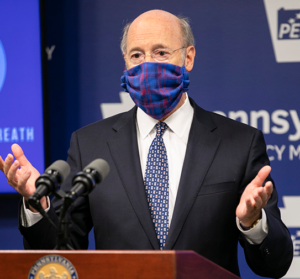 Governor Wolf has created a COVID-19 Vaccine Joint Task Force with administration representatives and “…members from each legislative caucus who can share vaccine information and communicate issues and solutions expediently on behalf of and to the broader General Assembly.” According to
Governor Wolf has created a COVID-19 Vaccine Joint Task Force with administration representatives and “…members from each legislative caucus who can share vaccine information and communicate issues and solutions expediently on behalf of and to the broader General Assembly.” According to  Department of Health – by the numbers
Department of Health – by the numbers The White House
The White House CMS Stakeholder Calls
CMS Stakeholder Calls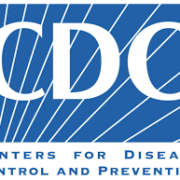 Centers for Disease Control and Prevention
Centers for Disease Control and Prevention Department of Health
Department of Health The Department of State has issued a waiver that permits licensed volunteers under the State Board of Medicine, the State Board of Osteopathic Medicine, and the State Board of Nursing to administer vaccinations in settings that fall outside the definition of “approved clinic,” including community-based primary-care clinics and clinics in medically underserved areas and state and federally qualified health centers. See the waiver announcement
The Department of State has issued a waiver that permits licensed volunteers under the State Board of Medicine, the State Board of Osteopathic Medicine, and the State Board of Nursing to administer vaccinations in settings that fall outside the definition of “approved clinic,” including community-based primary-care clinics and clinics in medically underserved areas and state and federally qualified health centers. See the waiver announcement  The bill also should include additional targeted funding for safety-net hospitals, help with staffing, an extension of the current moratorium on the Medicare sequestration, and forgiveness for safety-net hospitals for loans they received under the Medicare Accelerated and Advance Payment Program.
The bill also should include additional targeted funding for safety-net hospitals, help with staffing, an extension of the current moratorium on the Medicare sequestration, and forgiveness for safety-net hospitals for loans they received under the Medicare Accelerated and Advance Payment Program. Department of Human Services
Department of Human Services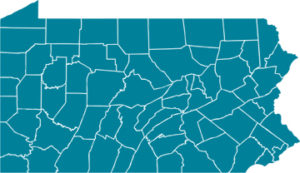 Resources to Consult
Resources to Consult The Department of Health has amended its hospital reporting order effective on January 27, 2021 to require daily reporting to the CORVENA system by 10:00 a.m. instead of the previous 8:00 a.m. deadline. The order also was amended to include as a required data field “Other categories or data fields required by the federal data reporting system (TeleTracking)” to ensure that facilities are completing all necessary information for the Health Department’s upload from CORVENA into the Teletracking system. Go
The Department of Health has amended its hospital reporting order effective on January 27, 2021 to require daily reporting to the CORVENA system by 10:00 a.m. instead of the previous 8:00 a.m. deadline. The order also was amended to include as a required data field “Other categories or data fields required by the federal data reporting system (TeleTracking)” to ensure that facilities are completing all necessary information for the Health Department’s upload from CORVENA into the Teletracking system. Go  As of January 27 the state’s
As of January 27 the state’s  President-elect Biden has nominated Pennsylvania Department of Health Secretary Rachel Levine to become assistant secretary of the U.S. Department of Health and Human Services.
President-elect Biden has nominated Pennsylvania Department of Health Secretary Rachel Levine to become assistant secretary of the U.S. Department of Health and Human Services. The report breaks down the additional costs and lost revenue as follows:
The report breaks down the additional costs and lost revenue as follows: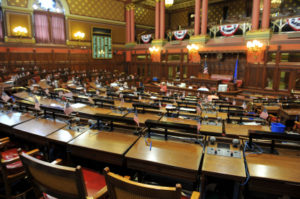 General Assembly
General Assembly  Provider Relief Fund
Provider Relief Fund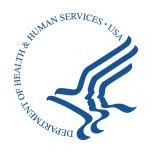 Department of Health and Human Services
Department of Health and Human Services Centers for Disease Control and Prevention
Centers for Disease Control and Prevention